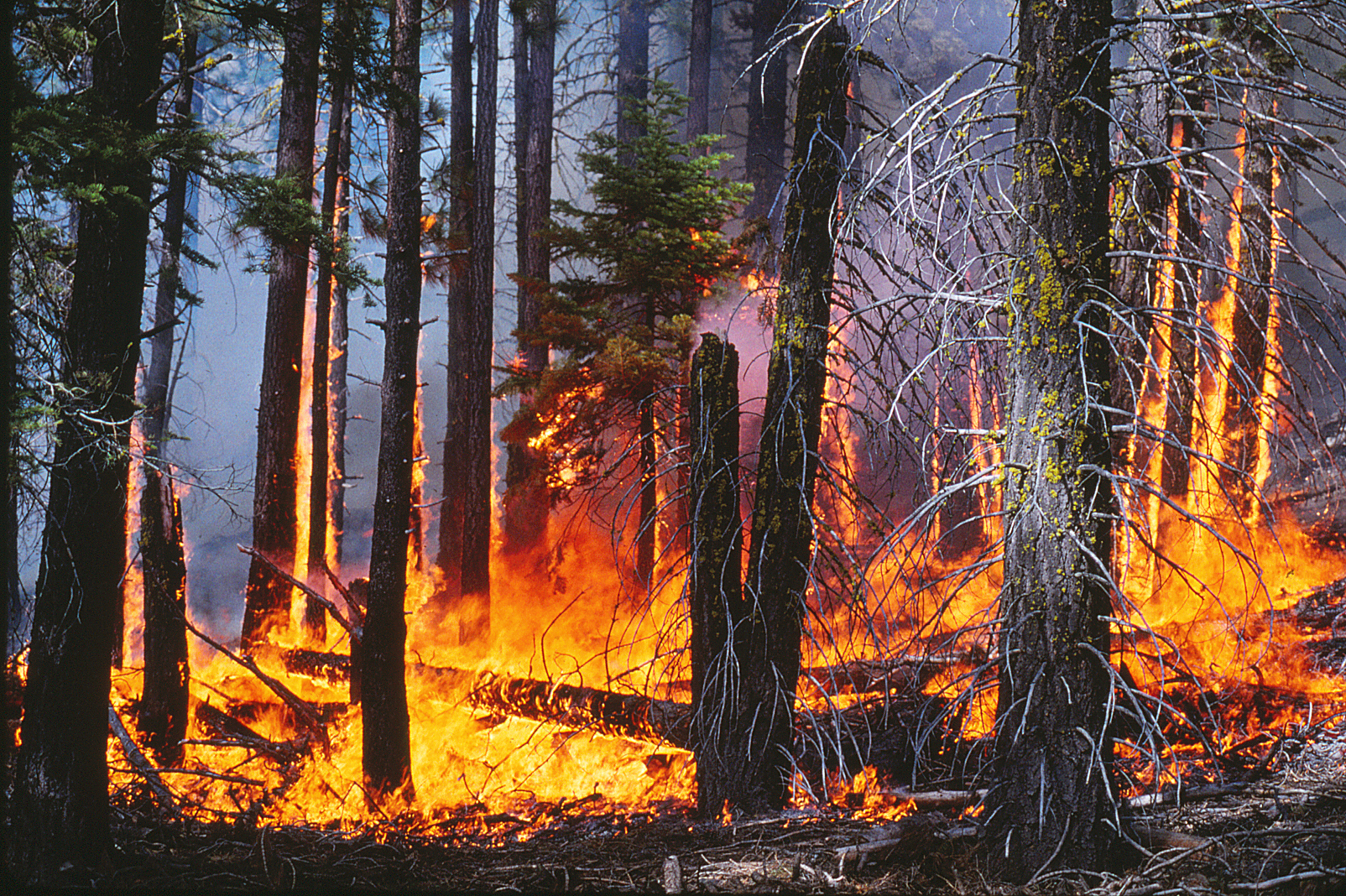Human activities in recent centuries have affected wildfire patterns in the Sierra Nevada
Half of the federal funds for fire suppression are spent each year in California, and with the projected effects of rising temperatures to take into account as well, understanding the patterns of forest fires in the area has great practical significance. Tree-ring studies can help determine the dates and sizes of wildfires before there were any reliable written records by noting fire scars in the accurately dated ring patterns of trees, distinctive marks left when fire wounds but does not kill a tree. Past studies have shown that particular patterns of weather will increase the chances of widespread fire in a particular year (such as a hot dry summer after cooler years with plentiful rain) and that these patterns become more or less common with longer-term shifts in climate. But human activities also influence the pattern of fire on the landscape, as people light more fires that spread through the forest, go to great lengths to extinguish forest fires, have their livestock consume the low vegetation that helps fire spread, or carve up formerly continuous forests with roads and fields. A recent study by Valerie Trouet of the LTRR and her co-authors shows that human history over the past four centuries has had a major effect in shaping how forest fires responded to climate (A. H. Taylor, V. Trouet, C. N. Skinner & S. Stephens “Socioecological transitions trigger fire regime shifts and modulate fire–climate interactions in the Sierra Nevada, USA, 1600–2015 CE” PNAS Early Edition doi: 10.1073/pnas.1609775113 http://www.pnas.org/content/early/2016/11/08/1609775113.full).
They used tree-ring reconstructions of the number and extent of fires in the Sierra Nevada for most of the period after the year 1600, only switching to documentary sources in the twentieth century. They then applied to the fire data one of the statistical techniques that can identify regime shifts—periods of time where one consistent pattern of behavior abruptly transitions to another. The technique had originally been devised to identify shifts in climate systems, and they also applied it to various reconstructed climatic variables for the same period. However the fire regime shifts did not match the climatic shifts, but instead seemed to correspond to events in human history. Up to the year 1775 the Native hunter-gatherers were making extensive use of low-intensity fire within the forests, but had the effect of burning up potential fuel as it accumulated, and limiting the size of forest patches that could sustain large-scale wildfires. The Spanish missions established from 1769 onward greatly reduced the influence of hunter-gatherers in the forests by the direct effects of colonialism and the indirect effects of introduced disease epidemics, and this reduction in human control led to an increase in fire activity. However there was a return to something approaching the initial fire regime in 1866, although this change was driven by much greater disturbance of the forests by the huge influx of settlers during the Gold Rush, which started in 1848. Finally, a shift to very low fire frequencies after 1904 corresponded to fire suppression policies seen in many parts of the Western US (sometimes called the Smoky Bear effect). Not only did human activities rather than climate determine when one fire regime shifted to another, but the relationship between fire and climate changed with the regimes, with the relationship between fire and moisture being strongest after the missions were established but before the Gold Rush, and the relationship between fire and temperature vanishing completely during twentieth century fire suppression, although a more detailed analysis of this period shows a shift to higher fire frequencies in 1987, coinciding with increasing temperatures after the late 1980s.


